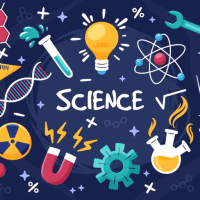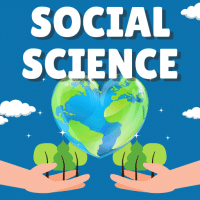Class 10 Exam > Class 10 Questions > Water resources mind map?
Start Learning for Free
Water resources mind map?
Most Upvoted Answer
Water resources mind map?
Water Resources Mind Map
Water resources are essential for the survival and development of all living organisms on Earth. They play a crucial role in maintaining ecosystems, supporting agriculture, providing drinking water, and generating hydropower. Let's explore the various aspects of water resources in detail.
1. Definition of Water Resources:
Water resources refer to the sources of water that are available for various uses. They can be classified into two categories: surface water and groundwater.
2. Surface Water:
Surface water includes water bodies such as rivers, lakes, reservoirs, and ponds. It is replenished by precipitation, and it is easily accessible for human use. Surface water is used for irrigation, drinking water supply, industries, and recreational activities.
3. Groundwater:
Groundwater is water that is stored beneath the Earth's surface in aquifers. It is obtained through wells and tube wells. Groundwater is essential for sustaining agriculture, providing drinking water in areas with limited surface water resources, and supporting ecosystems.
4. Importance of Water Resources:
Water resources are vital for various reasons:
- Sustaining life: Water is essential for the survival of all living organisms. It is a fundamental requirement for drinking, cooking, and maintaining personal hygiene.
- Agriculture: Water is crucial for irrigation, which is necessary for crop cultivation. It supports food production and sustains livelihoods.
- Industries: Many industries require water for manufacturing processes, cooling, and cleaning purposes.
- Hydropower generation: Water is used to generate electricity through hydropower plants. This renewable energy source reduces dependence on fossil fuels.
- Ecosystems: Water resources support diverse ecosystems by providing habitats for plants and animals.
5. Challenges and Conservation of Water Resources:
Water resources face numerous challenges, including:
- Overexploitation: Excessive withdrawal of groundwater and surface water can lead to depletion and drying up of water sources.
- Pollution: Industrial, agricultural, and domestic activities can contaminate water bodies, making them unsuitable for use.
- Climate change: Changing weather patterns and increasing temperatures can affect water availability, leading to droughts or floods.
To conserve water resources, measures such as rainwater harvesting, efficient irrigation techniques, wastewater treatment, and awareness campaigns on water conservation are essential.
Conclusion:
Water resources are a precious and finite resource that must be managed sustainably. Understanding their importance, conservation, and addressing the challenges they face is crucial for the well-being of both present and future generations.
Water resources are essential for the survival and development of all living organisms on Earth. They play a crucial role in maintaining ecosystems, supporting agriculture, providing drinking water, and generating hydropower. Let's explore the various aspects of water resources in detail.
1. Definition of Water Resources:
Water resources refer to the sources of water that are available for various uses. They can be classified into two categories: surface water and groundwater.
2. Surface Water:
Surface water includes water bodies such as rivers, lakes, reservoirs, and ponds. It is replenished by precipitation, and it is easily accessible for human use. Surface water is used for irrigation, drinking water supply, industries, and recreational activities.
3. Groundwater:
Groundwater is water that is stored beneath the Earth's surface in aquifers. It is obtained through wells and tube wells. Groundwater is essential for sustaining agriculture, providing drinking water in areas with limited surface water resources, and supporting ecosystems.
4. Importance of Water Resources:
Water resources are vital for various reasons:
- Sustaining life: Water is essential for the survival of all living organisms. It is a fundamental requirement for drinking, cooking, and maintaining personal hygiene.
- Agriculture: Water is crucial for irrigation, which is necessary for crop cultivation. It supports food production and sustains livelihoods.
- Industries: Many industries require water for manufacturing processes, cooling, and cleaning purposes.
- Hydropower generation: Water is used to generate electricity through hydropower plants. This renewable energy source reduces dependence on fossil fuels.
- Ecosystems: Water resources support diverse ecosystems by providing habitats for plants and animals.
5. Challenges and Conservation of Water Resources:
Water resources face numerous challenges, including:
- Overexploitation: Excessive withdrawal of groundwater and surface water can lead to depletion and drying up of water sources.
- Pollution: Industrial, agricultural, and domestic activities can contaminate water bodies, making them unsuitable for use.
- Climate change: Changing weather patterns and increasing temperatures can affect water availability, leading to droughts or floods.
To conserve water resources, measures such as rainwater harvesting, efficient irrigation techniques, wastewater treatment, and awareness campaigns on water conservation are essential.
Conclusion:
Water resources are a precious and finite resource that must be managed sustainably. Understanding their importance, conservation, and addressing the challenges they face is crucial for the well-being of both present and future generations.

|
Explore Courses for Class 10 exam
|

|
Question Description
Water resources mind map? for Class 10 2025 is part of Class 10 preparation. The Question and answers have been prepared according to the Class 10 exam syllabus. Information about Water resources mind map? covers all topics & solutions for Class 10 2025 Exam. Find important definitions, questions, meanings, examples, exercises and tests below for Water resources mind map?.
Water resources mind map? for Class 10 2025 is part of Class 10 preparation. The Question and answers have been prepared according to the Class 10 exam syllabus. Information about Water resources mind map? covers all topics & solutions for Class 10 2025 Exam. Find important definitions, questions, meanings, examples, exercises and tests below for Water resources mind map?.
Solutions for Water resources mind map? in English & in Hindi are available as part of our courses for Class 10.
Download more important topics, notes, lectures and mock test series for Class 10 Exam by signing up for free.
Here you can find the meaning of Water resources mind map? defined & explained in the simplest way possible. Besides giving the explanation of
Water resources mind map?, a detailed solution for Water resources mind map? has been provided alongside types of Water resources mind map? theory, EduRev gives you an
ample number of questions to practice Water resources mind map? tests, examples and also practice Class 10 tests.

|
Explore Courses for Class 10 exam
|

|
Signup for Free!
Signup to see your scores go up within 7 days! Learn & Practice with 1000+ FREE Notes, Videos & Tests.


















